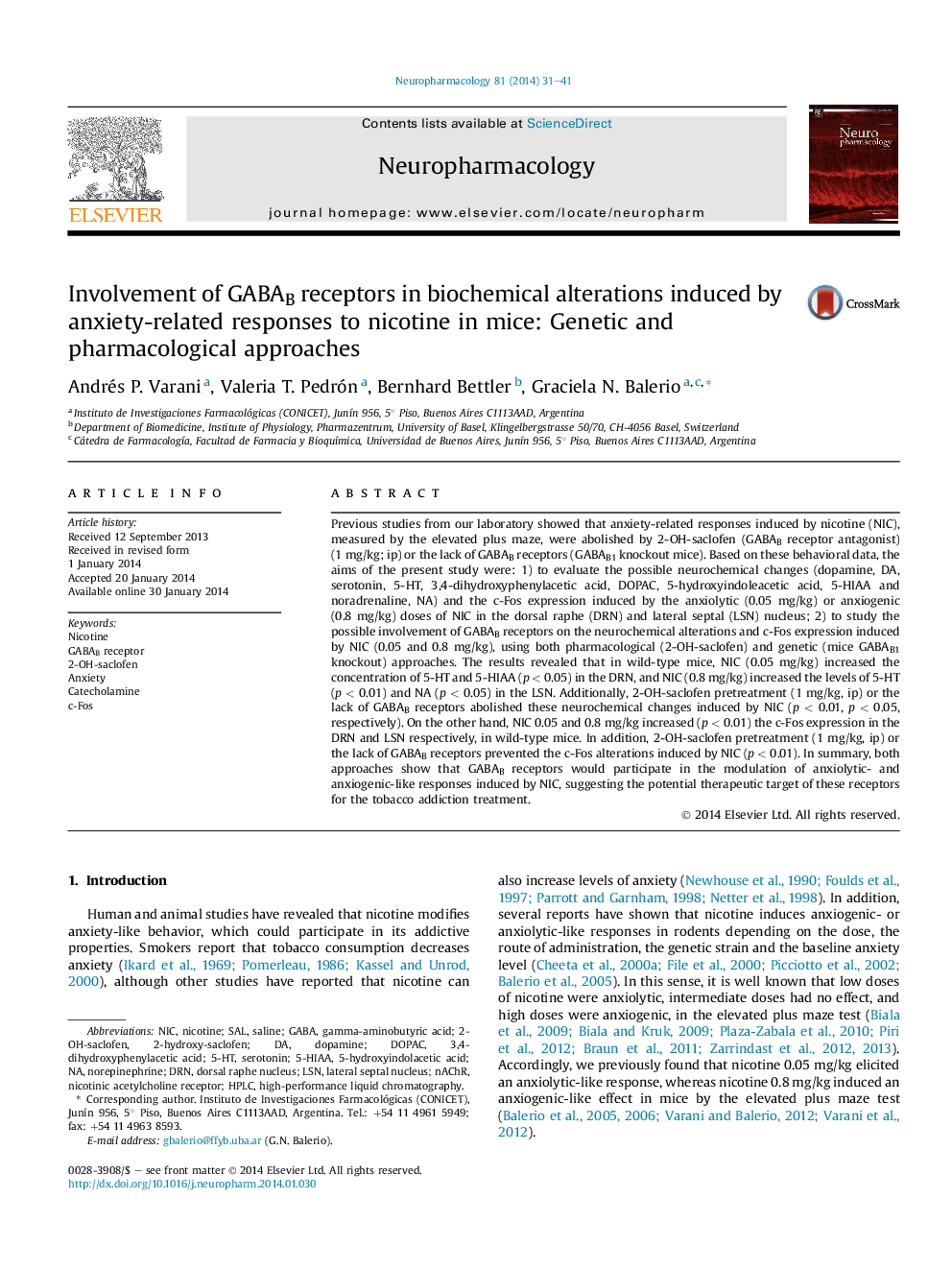| Article ID | Journal | Published Year | Pages | File Type |
|---|---|---|---|---|
| 2493229 | Neuropharmacology | 2014 | 11 Pages |
•NIC 0.05 and 0.8 mg/kg induced neurochemical changes in DRN and LSN, respectively.•2-OH-SAC or GABAB receptor lack prevents the neurochemical changes induced by NIC.•NIC 0.05 and 0.8 mg/kg increased c-Fos expression in DRN and LSN, respectively.•2-OH-SAC or GABAB receptor lack prevents c-Fos alterations induced by NIC.
Previous studies from our laboratory showed that anxiety-related responses induced by nicotine (NIC), measured by the elevated plus maze, were abolished by 2-OH-saclofen (GABAB receptor antagonist) (1 mg/kg; ip) or the lack of GABAB receptors (GABAB1 knockout mice). Based on these behavioral data, the aims of the present study were: 1) to evaluate the possible neurochemical changes (dopamine, DA, serotonin, 5-HT, 3,4-dihydroxyphenylacetic acid, DOPAC, 5-hydroxyindoleacetic acid, 5-HIAA and noradrenaline, NA) and the c-Fos expression induced by the anxiolytic (0.05 mg/kg) or anxiogenic (0.8 mg/kg) doses of NIC in the dorsal raphe (DRN) and lateral septal (LSN) nucleus; 2) to study the possible involvement of GABAB receptors on the neurochemical alterations and c-Fos expression induced by NIC (0.05 and 0.8 mg/kg), using both pharmacological (2-OH-saclofen) and genetic (mice GABAB1 knockout) approaches. The results revealed that in wild-type mice, NIC (0.05 mg/kg) increased the concentration of 5-HT and 5-HIAA (p < 0.05) in the DRN, and NIC (0.8 mg/kg) increased the levels of 5-HT (p < 0.01) and NA (p < 0.05) in the LSN. Additionally, 2-OH-saclofen pretreatment (1 mg/kg, ip) or the lack of GABAB receptors abolished these neurochemical changes induced by NIC (p < 0.01, p < 0.05, respectively). On the other hand, NIC 0.05 and 0.8 mg/kg increased (p < 0.01) the c-Fos expression in the DRN and LSN respectively, in wild-type mice. In addition, 2-OH-saclofen pretreatment (1 mg/kg, ip) or the lack of GABAB receptors prevented the c-Fos alterations induced by NIC (p < 0.01). In summary, both approaches show that GABAB receptors would participate in the modulation of anxiolytic- and anxiogenic-like responses induced by NIC, suggesting the potential therapeutic target of these receptors for the tobacco addiction treatment.
